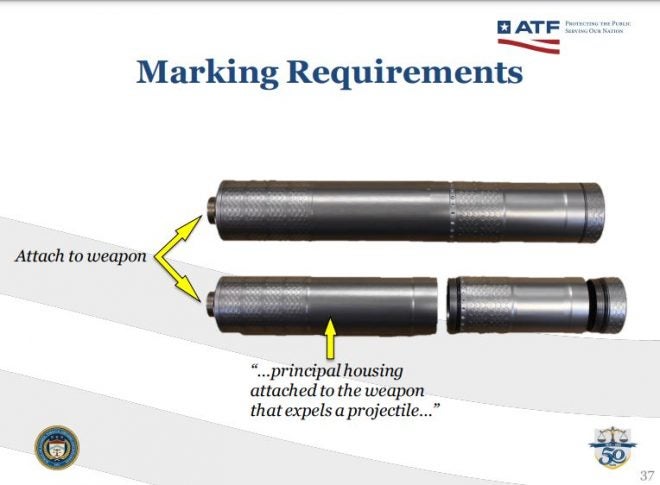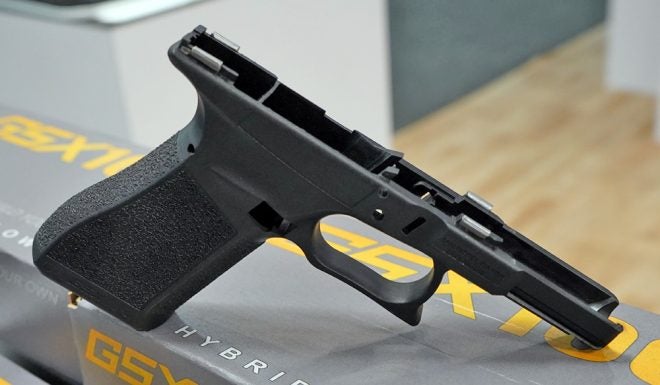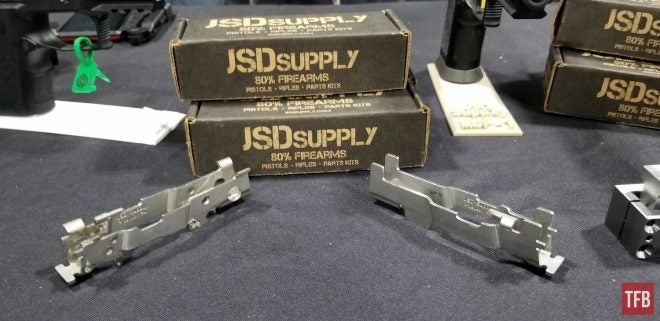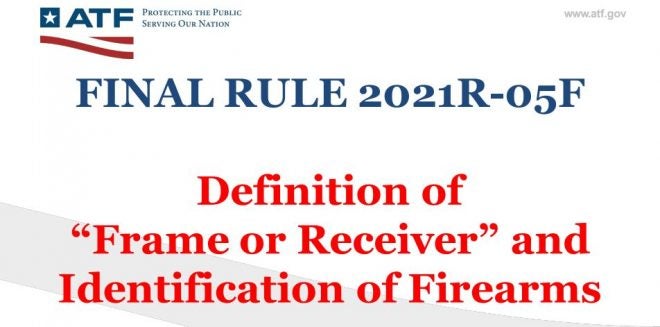The internet has been abuzz with discussions of the new ATF “receiver rule,” which became effective on August 24, 2022. Most of that conversation has focused on changes that affect the so-called 80% receivers. However, this regulation made changes in other areas as well. Let’s take a look at how this rule will work.
More Legal Coverage @ TFB:
- SIG Sauer Files Lawsuit Alleging P320 Misrepresentations By Attorney
- TFB B-Side Podcast: Gun Law and Gun Culture in Italy with Giorgio O
- Lawsuit Alert: Springfield Armory v. EAA
- The FRT-15 Story: An Interview with Rare Breed’s President Lawrence Demonico
- PSA: Double-Check Your State Laws Before Buying the FN502
Background
It is worth noting that this is a rule, not a law. How are those different? Congress makes laws. Sometimes, those laws delegate some authority to a government agency to make definitions. This is most often the case in highly technical areas. When an agency wants to make a decision about definitions, they create a rule. That rule must receive comments from the public before it is enacted. That is an extremely basic explanation of a very complex field of law but should suffice for our purposes here.
Recent media coverage of “ghost guns” and pressure on the ATF from gun control groups caused the agency to take another look at receivers. Certain kits, such as those sold by Polymer80, made it easier than ever to build a gun from parts without undergoing a background check. Passing a law through Congress is not easy compared to the rulemaking process, so ATF was directed to make a rule targeting 80% builds. ATF’s goal with this new regulation was redefining certain terms so that “privately manufactured firearms” (PMFs) would be more difficult to obtain.
Changes to “Receivers”
Current laws refer to “frames or receivers” as the key serialized part of a firearm. In a world of bolt-action rifles and revolvers, this was a fairly clear definition. However, more modern designs blur the line. These “split receiver” guns have some traditional frame characteristics spread across multiple parts. For example, the lower receiver of an AR-15 is the receiver, but the upper receiver of a SIG 55X-pattern gun is the receiver, though both designs house the trigger group in the lower and the bolt in the upper. Or, in the case of the FN FNC, it used to be the lower but is now the upper.

DSA FAL-pattern rifle, which also has a “split” receiver and a serialized upper (Daniel Y.)
The new rule clarifies which part will be considered the receiver. Previous determinations are codified in this rule (e.g. the upper receiver of the FAL is the receiver), and better standards are set out for which part will be the receiver on new gun designs. This portion of the rule is not a detriment to gun owners and will help manufacturers and home builders of guns know which part should be the serialized part.
Comments from the public helped improve these definitions and caught potential issues with the original proposed rule. One potential issue with early drafts was that both parts of a split receiver firearm could have been considered receivers, and required serialization. From the final rule:
Although the Department disagrees with numerous commenters who claim that the term ‘‘frame or receiver’’ in 18 U.S.C. 921(a)(3)(B) must be read to mean that a firearm may not have more than one frame or receiver, the Department has decided to alter the proposed definition in this final rule in response to comments.
This little excerpt makes clear that the ATF (wrongly) thinks that a gun could still have multiple receivers, but the outpouring of comments from the public made them change the rule. Next time the ATF is asking for public opinion on a potential rule, remember this.
One other type of “receiver” marking relates to silencers. They have always required serialization, but there has been some debate as to which piece should be serialized. The rule clarifies that the “principal housing” should be marked, even if it is not the part attached directly to the firearm.

ATF slide depicting the “principal housing” of a silencer
“Readily”
The new rule spends a lot of effort on parsing what is or is not readily convertible into a firearm. Prior to the rule, so-called 80% receivers could be sold as parts instead of firearms. The new rule changes this standard and considers an unfinished part to be a receiver at a much earlier stage.

[SHOT 2019] 80% Glock 19X Frame From GlockStore (Ray I. photo)
ATF changed the final rule to expressly limit those types of determinations:
The rule now expressly excludes from the definitions of ‘‘frame or receiver,’’ a ‘‘forging, casting, printing, extrusion, unmachined body, or similar article that has not yet reached a stage of manufacture where it is clearly identifiable as an unfinished component part of a weapon (e.g., unformed block of metal, liquid polymer, or other raw material).’’
This change is not great but is much better than the text of the original proposal.
The final rule includes a list of examples where ATF sets out things that are or are not receivers. An AK flat without indexing marks, which is not sold with a jig or tools, is not a receiver. Neither is “a billet or blank of an AR-15 variant receiver without critical interior areas having been indexed, machined, or formed.” ATF’s slide deck shows an image of an AR lower forging along with this text. Receiver blanks that are sold with templates, jigs, or tools are considered receivers under the rule. So are any billets or blanks sold with index holes for templates.

Slide from the ATF showing that an AR-15 forging is not a receiver
Personally Made Firearms
The primary target of this rule is guns that are made at home, particularly those which are sold as parts kits with an unfinished receiver. The rule explicitly mentions parts kits that include unfinished receivers and declares them to be firearms. This triggers serialization requirements as with factory guns.
Most of the burden of this rule falls on manufacturers and FFLs. Any kits in their inventory must be serialized prior to sale or destroyed. Gunsmiths are given express authorization to mark PMFs with serial numbers. Previously, there was debate about whether that constituted manufacturing or gunsmithing. A numbering system that FFLs and gunsmiths

[SHOT 2020] JSD Supply 80% Sig P320 and P365 (Luke C. photo)
Conclusion
While I do not love this new rule, it could be worse. There are also some silver linings in the additional clarifications of terms like “receiver.” But it also signals the death knell of the 80% kits which had become so prevalent. Privately manufactured firearms will continue to be made, though. And, in the era of 3D printing, this rule will not stop anyone who really wants to make a gun from building their own.
Disclaimer: This post is not legal advice, and is provided for general educational use. Please consult with an attorney before making any decisions based on this information.
 Your Privacy Choices
Your Privacy Choices
